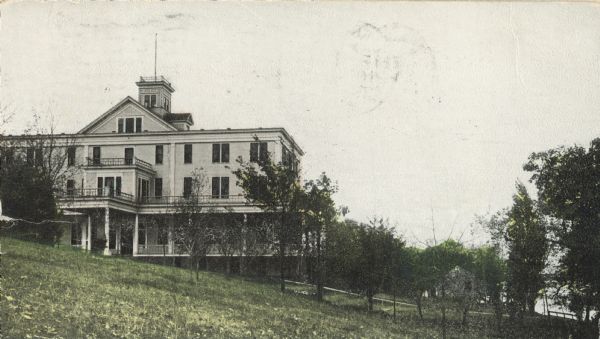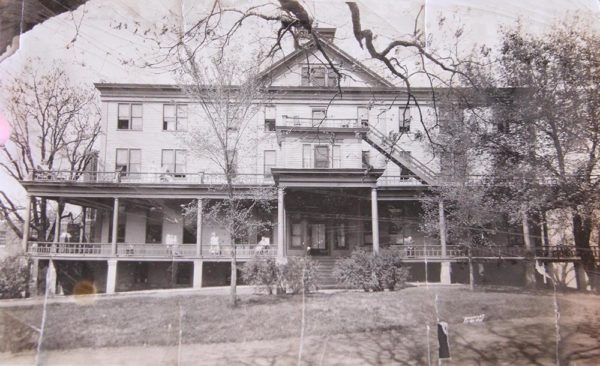Madison Sanitarium
Madison Sanitarium
Of greater importance, however, was the opening in 1903 of a branch of the famous Battle Creek Sanitarium, run by Dr. John Harvey Kellogg, inventor of corn flakes and other health foods. Kellogg, a graduate of both hydropathic and regular medical schools, had been directing a Seventh-day Adventist water cure in Battle Creek, Michigan, since 1876. In 1881 the Adventist prophetess, Ellen G. White, visited Madison and expressed interest in establishing a branch of the Battle Creek institution in Wisconsin, but the death of her husband a short time later led to a postponement in plans. It was the turn of the century before Adventists finally opened hydropathic treatment rooms and a vegetarian restaurant in the city. The success of these ventures encouraged them to purchase the Old Madison Water-Cure property on Lake Monona and to build a new 40-bed structure, the Madison Sanitarium, dedicated in 1903.
Unlike Madison’s previous hydropaths, the Adventists flourished. After their first year in operation they reported a net gain of $9,000 — despite performing more than $6,000 in charity work. Staffed by a husband-wife medical team and nurses from its own Missionary Nurses’ Training School, the Madison Sanitarium offered a range of services, including obstetrics and surgery. Not wishing to appear sectarian, the sanitarium emphasized its nonexclusive approach to therapy: “Electrotherapy, massage therapy, hydrotherapy, allopathy, surgery, diet and exercise are the measures resorted to in the treatment of disease in this place.” Nevertheless, the sanitarium specialized in hydrotherapy and included morning and afternoon water treatments in its weekly rates. Patients suffering from stomach disorders wore “moist girdles” at night. The sanitarium survived into the 1930’s.
Wisconsin Medicine: Historical Perspectives, Ronald L. Numbers, J.Judith Valzer Leavitt, editors. The University of Wisconsin Press, Madison, WI 1981.



